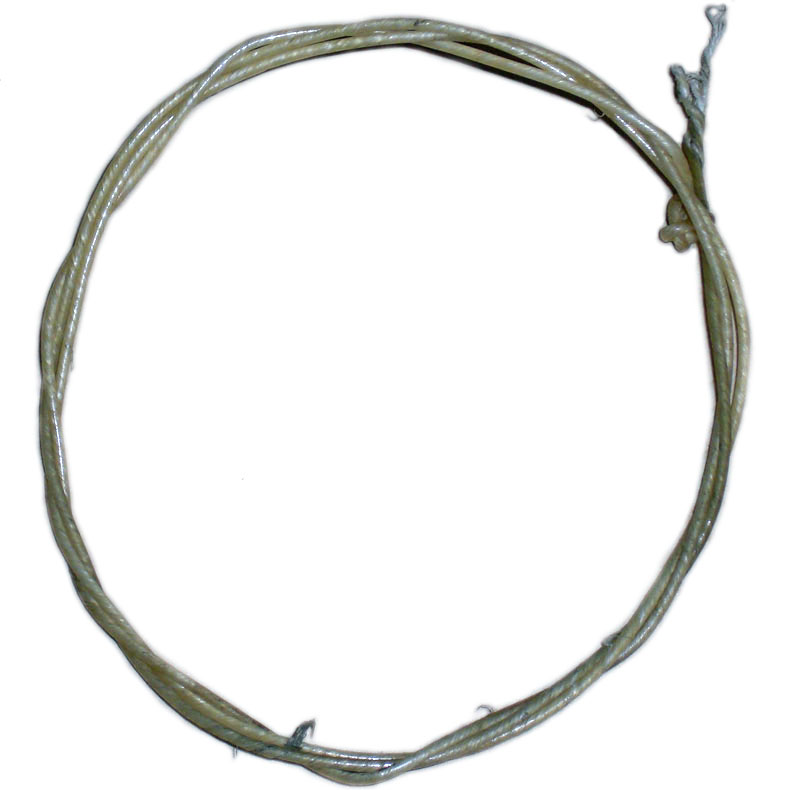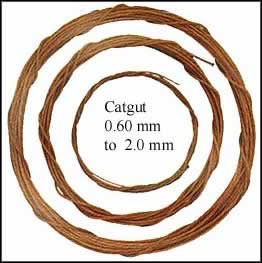Catgut
Catgut (English catgut, also catgut ) misleadingly various materials from sheep and other natural casings.
Term origin
Italian used saddler earlier the intestines of wild mountain sheep as yarn to sew leather. As it turned out, that the material is also well suited for strings of musical instruments, they sold it as cat gut to protect it from imitators.
Use in musical instruments
Use as strings
Even today, strings made from sheep and cattle intestines are made. However, the term is no longer common.
Use as frets
Some traditional stringed instruments such as the Persian Tar, intestines serve as frets.
Use in sport
For various racquet sports (badminton, squash, tennis) natural casing is used for the stringing of the racket. Coverings made of natural gut are often high- quality than Kunststoffbesaitungen, but lose their exquisite features also much faster.
Use as a medical suture
Galen already reported on the use of strings for suturing wounds. At the time of Lister were common in medicine and veterinary medicine ' catgut ' and silk. The medical word ' catgut ' has never been Germanized and it was never claimed that this gut would have been used to cats, although it would like to believe lay by literal translation. Catgut was recently made of the intestines of highland sheep even from bovine collagen. The filaments decompose under the action of endogenous enzymes within a few days and be so absorbed, so redeem himself on and do not need to be drawn. Catgut may be regularly no longer used as a natural animal material from Beware of BSE as suture material even in veterinary medicine. Instead, synthetic resorbable materials are used that are exclusively hydrolyzed by the action of the Gewebswassers ( without variable enzymatic activity).
Sausage making
Also, sheep casings, the Pelle different stringed sausages, sometimes referred to as catgut.








